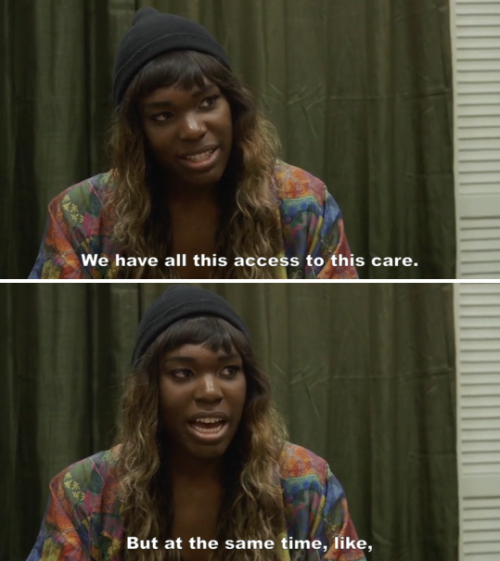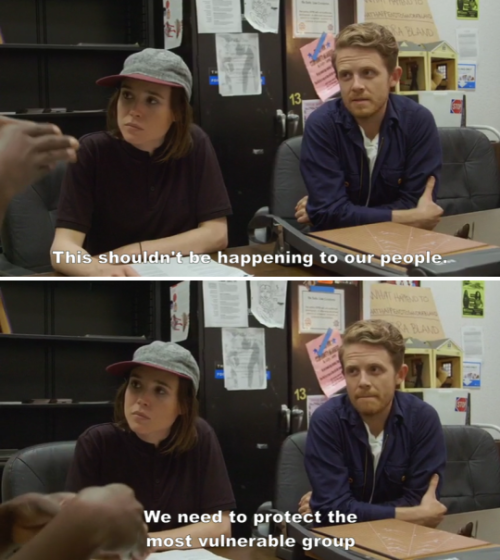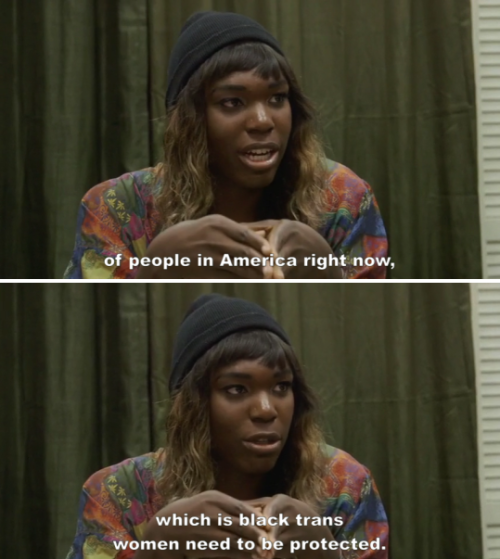Er-zico - Leisure

More Posts from Er-zico and Others

5 Myths About Men with Eating Disorders
By Jason Deng–In his song with Lil Wayne, “Nothing But Trouble,” Charlie Puth sings, “These Instagram models are nothing but trouble.” The song’s about the dangers of judging a book by its cover (i.e. judging someone by their IG pics). It’s about the unhealthy emphasis our generation places on physical appearance. And it’s primarily about women.
But men also struggle with looking “attractive.” Whether that’s trying to be a thin “hipster” or a sculpted “jock,” it’s a legitimate struggle. And sometimes, that struggle comes with hours obsessing over your reflection in a car window, counting calories only to spit them back out, feeling uncomfortable in your skin but wanting nothing more than to retreat into it. That’s how it was for me.
Unfortunately, when eating disorders come up in the news, it’s rarely about men. But men DO struggle with EDs, and when they do, it sucks every bit as much as it does when a woman struggles. It’s important that people are aware of this. Here are five common myths about men with EDs to help clear the air:
1. Anorexia is a girl’s disease.
No, it’s not. A 2012 GQ article noted that recent studies suggest that 20%—even 30%—of anorexics are male. Framing EDs as a female-only disease is the quickest way to isolate men with EDs and prevent them from getting help.
2. Men don’t/shouldn’t care about how they look.
Because of all the pressure on women to look “pretty,” people automatically assume that men don’t care about how they look. Worse yet, that assumption enforces a notion that men shouldn’t care about how they look, or that at least their attractiveness should be effortless. But it isn’t.
3. Dieting is something only women do.
While I was struggling with my body image, one feeling that I acutely got was that only women are allowed to care about eating healthy. Men are supposed to be “chill” with eating pizzas three times a day, seven days a week. Going on a “diet” to become healthy is “unmanly.” This simply isn’t true, and anyone can tell you that pizza all day every day is the quickest way to clogging your arteries. Men, like women, can and should care (within reason) about what they eat.
4. The manly way to lose weight is to exercise.
This goes hand-in-hand with myth #3. While men may be criticized for dieting, they can only be praised for exercising. Sayings like, “be a man,” not only hinder a man’s emotional capacity but also suggest to him that as long as he is a “strong man,” then he is doing something right. But overexercising can not only leave you injury-prone, it can even result in organ failure.
5. It’s possible and healthy to look like fitness models.
It doesn’t take long to find the fitness models on Instagram. Terms like “dedication” and “willpower” dominate the captions, and if you buy this supplement, then you TOO can look like Arnold Schwarzenegger. Unfortunately, the fitness industry is full of lies. Most male models can only look the way they do by turning to drugs, even though none will ever admit it, since it’s more profitable to say their physique is the result of purely “hard work.” It’s no wonder that “bigorexia,” also known as muscle dysmorphia, is becoming increasingly prevalent.
Charlie probably wasn’t thinking of EDs when he wrote those lyrics, but he did get a couple of things right. The emphasis on physical appearance is trouble. It’s literally killing us: women AND men.




(via kids are weird. kids are awesome.)








Gaycation - “USA”
Space Station Science: Biological Research

Each month, we highlight a different research topic on the International Space Station. In August, our focus is biological research. Learning how spaceflight affects living organisms will help us understand potential health risks related to humans on long duration missions, including our journey to Mars.

Cells, microbes, animals and plants are affected by microgravity, and studying the processes involved in adaptation to spaceflight increases our fundamental understanding of biological processes on Earth. Results on Earth from biological research in space include the development of new medications, improved agriculture, advancements in tissue engineering and regeneration, and more.
Take a look at a few of the biological research experiments performed on space station:
Biomolecule Sequencer

Living organisms contain DNA, and sequencing DNA is a powerful way to understand how they respond to changing environments. The Biomolecule Sequencer experiment hopes to demonstrate (for the first time) that DNA sequencing is feasible in an orbiting spacecraft. Why? A space-based DNA sequencer could identify microbes, diagnose diseases and understand crew member health, and potentially help detect DNA- based life elsewhere in the solar system.
Ant-stronauts

Yes, ant-stronauts…as in ants in space. These types of studies provide insights into how ants answer collective search problems. Watching how the colony adapts as a unit in the quest for resources in extreme environments, like space, provides data that can be used to build algorithms with varied applications. Understanding how ants search in different conditions could have applications for robotics.
TAGES

The TAGES experiment (Transgenic Arabidopsis Gene Expression System) looks to see how microgravity impacts the growth of plant roots. Fluorescent markers placed on the plant’s genes allow scientists to study root development of Arabidopsis (a cress plant) grown on the space station. Evidence shows that directional light in microgravity skews root growth to the right, rather than straight down from the light source. Root growth patters on station mimic that of plants grown at at 45% degree angle on Earth. Space flight appears to slow the rate of the plant’s early growth as well.
Heart Cells

Spaceflight can cause a suite of negative health effects, which become more problematic as crew members stay in orbit for long periods of time. Effects of Microgravity on Stem Cell-Derived Cardiomycytes (Heart Cells) studies the human heart, specifically how heart muscle tissue contracts, grows and changes in microgravity. Understanding how heart muscle cells change in space improves efforts for studying disease, screening drugs and conducting cell replacement therapy for future space missions.
Medaka Fish

Chew on these results…Jaw bones of Japanese Medaka fish in microgravity show decreased mineral density and increased volume of osteoclasts, cells that break down bone tissue. Results from this study improve our understanding of the mechanisms behind bone density and organ tissue changes in space.
These experiments, and many others, emphasize the importance of biological research on the space station. Understanding the potential health effects for crew members in microgravity will help us develop preventatives and countermeasures.
Make sure to follow us on Tumblr for your regular dose of space: http://nasa.tumblr.com
Only the brave are free.
Seneca (via philosophybits)








Watch Powerful Spoken Word Poem “Black Joke” By Taylor Steele
In her poem “Black Joke” poet Taylor Steele highlights the most common jokes White people throw at Black people. She perfectly explains how unthoughtful it is of people to say such things and how an intention to come off as funny turns you into a racist. Next time you come up with a witty remark, think twice before letting unwholesome word proceed from your mouth.
Full poem
#BlackLivesMatter



To those who celebrate it, Happy Independence Day! Enjoy the parabolic envelopes that form while those bright, sparkling, parabolic curves are etched into the sky tonight…



#KnowYourHistory: #Stonewall



7 High-Tech Period Products You Had No Idea Existed

Eye Study Underscores the Long Lasting Benefits of Controlling Diabetes
NIH-funded study shows less diabetic retinopathy progression among those who underwent intensive glycemic control.
The research is in Diabetes Care. (full access paywall)
-
 wiccgirl reblogged this · 8 years ago
wiccgirl reblogged this · 8 years ago -
 jayleenrodriguez-blog liked this · 8 years ago
jayleenrodriguez-blog liked this · 8 years ago -
 tigerwhite51-blog liked this · 8 years ago
tigerwhite51-blog liked this · 8 years ago -
 shittyshines liked this · 8 years ago
shittyshines liked this · 8 years ago -
 s-incerelyy liked this · 8 years ago
s-incerelyy liked this · 8 years ago -
 bettygrundler-blog reblogged this · 8 years ago
bettygrundler-blog reblogged this · 8 years ago -
 mila1965-blog liked this · 8 years ago
mila1965-blog liked this · 8 years ago -
 sendusun liked this · 8 years ago
sendusun liked this · 8 years ago -
 m0rikou reblogged this · 8 years ago
m0rikou reblogged this · 8 years ago -
 hemsoek-blog liked this · 8 years ago
hemsoek-blog liked this · 8 years ago -
 pusskisser liked this · 8 years ago
pusskisser liked this · 8 years ago -
 calumscrush reblogged this · 8 years ago
calumscrush reblogged this · 8 years ago -
 092702ss-blog liked this · 8 years ago
092702ss-blog liked this · 8 years ago -
 pipo77-blog1 liked this · 8 years ago
pipo77-blog1 liked this · 8 years ago -
 drdeath11-blog liked this · 8 years ago
drdeath11-blog liked this · 8 years ago -
 troglen500 liked this · 8 years ago
troglen500 liked this · 8 years ago -
 kennedy14-blog1 liked this · 8 years ago
kennedy14-blog1 liked this · 8 years ago -
 damnjanelle-blog liked this · 8 years ago
damnjanelle-blog liked this · 8 years ago -
 romanehsl-blog liked this · 8 years ago
romanehsl-blog liked this · 8 years ago -
 gokcenliks reblogged this · 8 years ago
gokcenliks reblogged this · 8 years ago -
 gokcenliks liked this · 8 years ago
gokcenliks liked this · 8 years ago -
 annasoffko-blog liked this · 8 years ago
annasoffko-blog liked this · 8 years ago -
 limanor-blog liked this · 8 years ago
limanor-blog liked this · 8 years ago -
 king-grif reblogged this · 8 years ago
king-grif reblogged this · 8 years ago -
 king-grif liked this · 8 years ago
king-grif liked this · 8 years ago -
 aphmausenpai123-blog liked this · 8 years ago
aphmausenpai123-blog liked this · 8 years ago -
 lulu931-blog liked this · 8 years ago
lulu931-blog liked this · 8 years ago -
 cutefluffbutt reblogged this · 8 years ago
cutefluffbutt reblogged this · 8 years ago -
 dogaesthetics reblogged this · 8 years ago
dogaesthetics reblogged this · 8 years ago -
 lavendercupcakes-blog1 liked this · 8 years ago
lavendercupcakes-blog1 liked this · 8 years ago -
 jfsie7e-blog liked this · 8 years ago
jfsie7e-blog liked this · 8 years ago -
 kenlossg liked this · 8 years ago
kenlossg liked this · 8 years ago -
 zehraevler07-blog liked this · 8 years ago
zehraevler07-blog liked this · 8 years ago -
 midgetsass reblogged this · 8 years ago
midgetsass reblogged this · 8 years ago -
 riinku reblogged this · 8 years ago
riinku reblogged this · 8 years ago -
 itsmlbworld-blog liked this · 8 years ago
itsmlbworld-blog liked this · 8 years ago -
 thanatosbananatos reblogged this · 9 years ago
thanatosbananatos reblogged this · 9 years ago -
 marieeeecx-blog liked this · 9 years ago
marieeeecx-blog liked this · 9 years ago -
 hwinksy liked this · 9 years ago
hwinksy liked this · 9 years ago -
 pupupupupuppies reblogged this · 9 years ago
pupupupupuppies reblogged this · 9 years ago
Dear Readers,Welcome to my personal blog. I'm Sabyasachi Naik (Zico,24).An Agnostic,deeply NON religious(atheist), and Secular Progressive Civil Engineer . I'm brown and proud to be an Indian tribe. “I want to say a word to the Brahmins: In the name of God, religion, sastras you have duped us. We were the ruling people. Stop this life of cheating us from this year. Give room for rationalism and humanism.” ― Periyar E.V. Ramasamy
198 posts